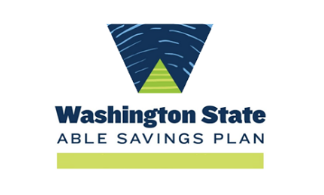
The Washington State ABLE Savings Plan is established pursuant to the ABLE Act and the Washington Achieving a Better Life Experience Act ("The Washington Act"). The plan is designed to be a "qualified ABLE program", which status permits a beneficiary of an ABLE account established under the plan to make tax-free withdrawals to pay for qualified disability expenses under certain circumstances.
- Program typeABLE Savings Plan
- Investment ManagerSellwood Consulting, LLC
- Inception2018
- State agencyGoverning Board of the Washington Achieving a Better Life Experience Program
- Program ManagerSumday Administration, LLC
Eligibility
State residency requirements:
Who can be a participant/owner in the program?
Program restrictions:
Did you know?
The plan can be used to pay for qualified disability expenses.
This can include education, job training and support, healthcare and financial management.
Savings in an ABLE account will not impact eligibility to receive government benefits.
The first $100,000 is exempt from the Supplemental Security Income limit, and beneficiaries will continue to receive Medicaid regardless of account size.
Residents are not limited to investing in their own state’s ABLE plan.
Another state may offer a plan with better suited investment options, lower fees or preferred features.
Visit this plan’s website to learn more
Contributions
Maximum contributions:
Minimum contributions:
Investment Options
Target-Risk Options:
Bank Money Market Investment / Checking Option:
See the best 529 plans, personalized for you
A good place to start
Fees & Expenses
Enrollment or application fee:
Account maintenance fee:
Program management fees:
Expenses of the underlying investments:
Total asset-based expense ratio:
Fees or restrictions on the number of disbursements
Taxes and other Benefits
Program match on contributions:
State tax deduction or credit for contributions:
State tax recapture provisions:
State tax treatment of qualified distributions:
State tax treatment of rollovers:
Medicaid eligibility
Medicaid recapture provisions
Is there a debit card/ purchasing card available, and if so, at what cost?
Statutory protection of an account from creditors:
Distributions & Terminations
To whom are distributions made payable:
Account Changes
Policy regarding participant/owner changes:
Documents, Access & Reporting
Does participant have online password-protected access to account?
Can the complete enrollment process including funding be done online?
Documents and other services accessible or downloadable on the program's public Web site:
Contact
Website:
Telephone:
https://twitter.com/wa_able